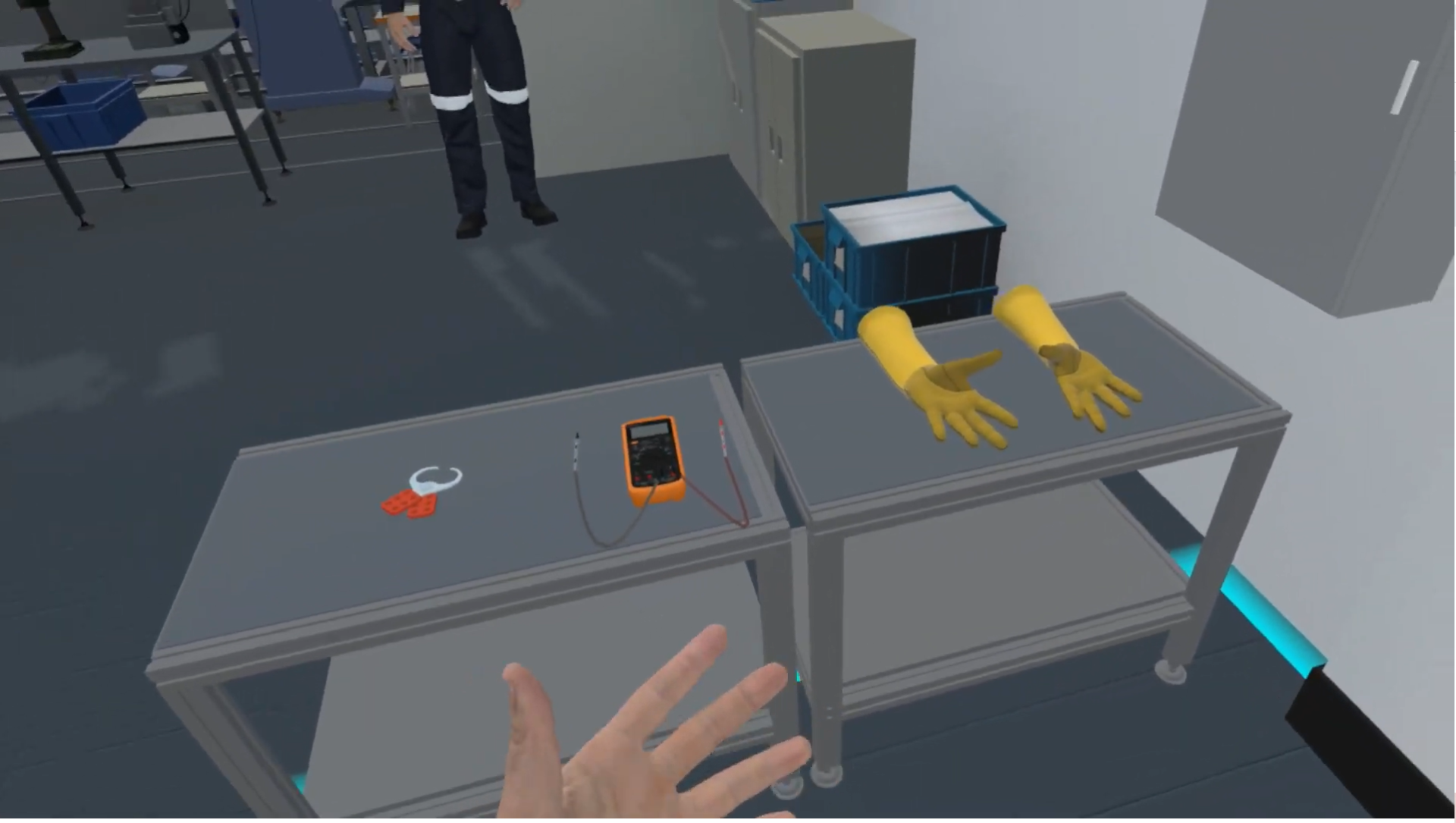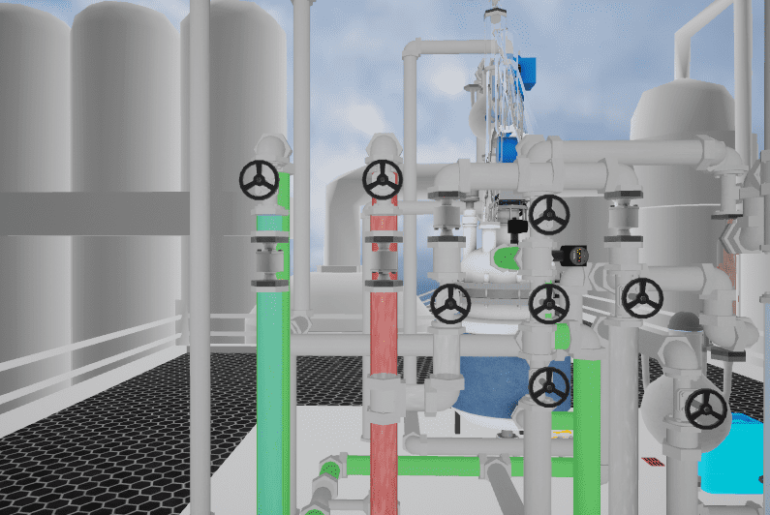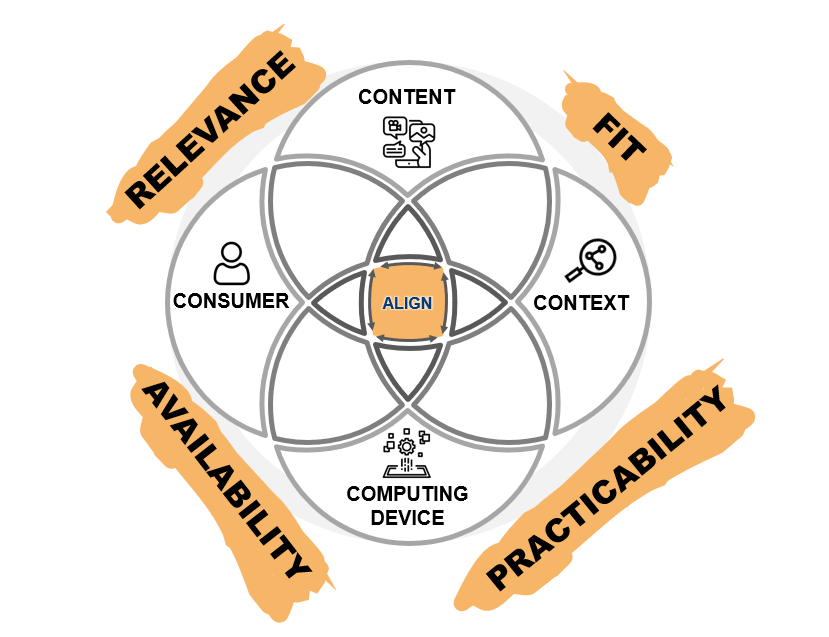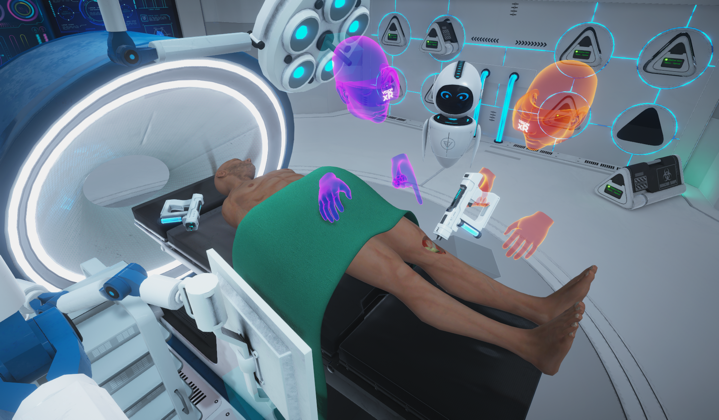The Problem
Electrical incidents are one of the deadliest forms of injuries in the workplace. According to the Electrical Safety Foundation International (ESFI), there were 1,560 workplace electrical injuries in 2018, 9% of which were fatal and due to electric shock. Most electrical accidents are preventable, but a single mistake can be fatal, and traditional videos and textbooks are not enough to prepare workers.
The Solution
A recent initiative by an electrical utility company highlights the effectiveness of virtual reality (VR) for safety training with 20 on-site participants over three days.
Based on the U.S. Occupational Safety and Health Administration’s list of the top electrical violations, the company used a VR simulation for lockout-tagout (LOTO), a safety procedure used in industrial workplaces to prevent injury when repairing dangerous machines. Users must lock and shut off all machines before doing any maintenance work on them. Whoever is performing the maintenance holds the key for the lock and is the only person with the ability to start the machine.
The steps to safely complete the LOTO training simulation are below:
- Locate the lockout box, and look at it for two seconds.
- Notify the supervisor that the electrical systems shutting down.
- Equip the protective gear: helmet and gloves.
- Remove the main power cable.
- De-energize the lockout box.
- Connect the tag lock to the lockout box.
- Test the system voltage.
The goal of the simulation was to make sure that participants used protective gear and correctly shut off the electrical systems. To measure these steps, the system captured spatial data within the VR experience using eye tracking (confirming the learners were aware of the tools and hazards) and user interactions (confirming the learners followed the steps in the correct sequence).
Quantitative Results
Each session was recorded in the VR platform and scored by evaluators to understand how learners performed throughout the scenario. It was essential that learners followed all of the steps in the right order, because in an on-the-job scenario, a single mistake could be deadly. Participants were measured based on three criteria:
- Did the participant perform the step?
- Did the participant perform the step in the right sequence?
- Did the participant complete the step correctly?
From the first day to the third day of training, the program saw:
- A 59% increase in knowledge retention.
- A 40% increase in compliance.
- A 20% decrease in task duration.
The company concluded that using VR in safety training provides significant improvements.
Qualitative Results
To capture additional insights, the company surveyed participants within the VR simulation to capture their thoughts about the experience.
Only 30% of the participants had experienced VR prior to the mechanical maintenance simulation, and some of the participants said they felt overwhelmed. The first day proved to be the most difficult and may have been a factor in the significant improvements in performance.
By the second day, the participants were more comfortable with the controls. After finishing the simulation, 100% of the participants reported that they found the experience helpful for training and would recommend it.
Overall, this case study suggests that training in VR can improve retention, compliance and task completion time. Participants also found VR to be a helpful and engaging form of learning. The company also noted that when designing training programs in VR, it is crucial to ensure the experience is as realistic as possible. Otherwise, it’s possible to make false assumptions about results.
When implementing a similar initiative, your organization can obtain additional context and insights into its success by capturing additional qualitative and quantitative data. Success is defined differently by each company; it is up to you to determine how to measure it.




